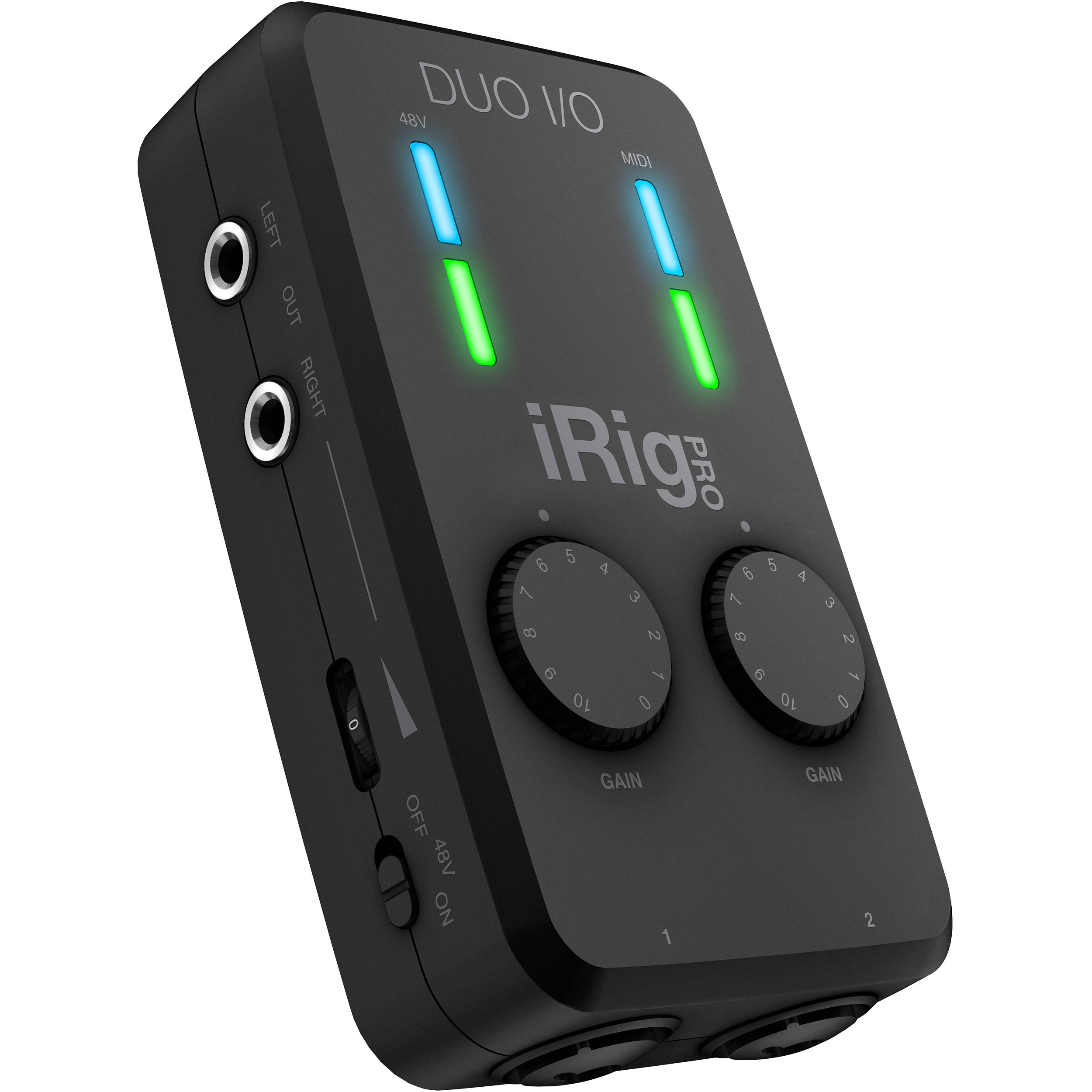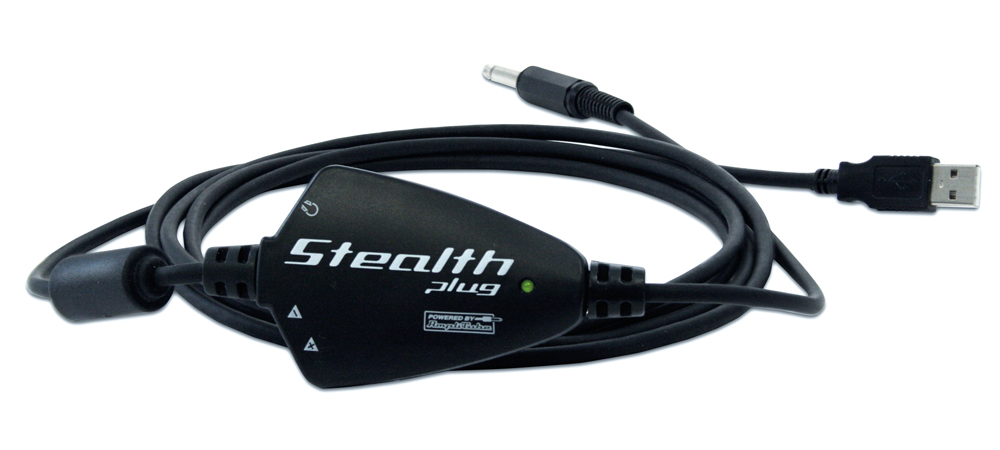My iRig doesn't have dedicated drivers, how do I get started on Windows 10?
Check your device's user manual for Windows compatibility information. Most iRig units with a USB port are Windows/PC compatible. Product user manuals are stored in My Products after registration. For a list of iRig devices with dedicated ASIO drivers click here.
May 1, 2020 - IK Multimedia has released custom ASIO drivers that are designed to offer multiple performance enhancements for their digital iRig products when used with Windows computers.
To get started on Windows if your iRig does not have dedicated ASIO drivers, you will need to download a third party driver called ASIO4ALL. Although it is a third party driver, we have tested it in several Windows configurations with great results. This third party driver allows you to select different input, and output sources, which is needed with some iRig models that do not offer an output. For example, the iRig HD or iRig Acoustic Stage.
This workaround is compatible with Windows XP, Windows Vista, Windows 7, Windows 8, and Windows 10.
Please follow these steps to setup your device on Windows. Please note that there are interfaces that may not work properly with the below steps:
- Apr 30, 2020 IK Multimedia has released custom ASIO drivers that are designed to offer multiple performance enhancements for their digital iRig products when used with Windows computers. With the release of the new audio drivers, IK Multimedia aims to improve the user experience for digital their iRig products.
- IK Multimedia iRig Stream Audio Interface With a pair of RCA audio inputs, the IK iRig Stream takes a stereo/mono feed from the board, and sends it to your phone, tablet or laptop for live streaming.
- Download ASIO4ALL
- Once downloaded, make sure you install ASIO4ALL and restart your system. This is required when installing any drivers to your Windows/PC system.
Note: It is suggested to install the Offline Settings option. This will allow you to adjust your ASIO4ALL settings before launching your audio software. - Launch the latest version of AmpliTube or your DAW. AmpliTube can be downloaded from My Products.
- In AmpliTube, make sure to click on Settings > Audio/MIDI Setup. Select the technology as an ASIO style driver, then choose ASIO4ALL as the Input/Output device.
- Click to view the 'Panel', this will open the ASIO4ALL settings.
- Inside the ASIO4ALL Panel, click the 'wrench' icon in lower right corner to show all available sub-devices, a red 'X' will appear over the icon was clicked. This option is necessary for you to select multiple interfaces for use. You will see various devices listed under the WDM Device List.
- Click the enable/power button on both the iRig and your other interface that you will be listening to the output from, then turn all other devices off. See image.
- Once the above is set, view your AmpliTube Settings > Audio/MIDI Settings window once again. Under Input channels, you can now view and select iRig as your input. Under Output channels, make sure your interface you are monitoring from is selected.

Note: Do NOT enable the 'Hardware Buffer' under Options in the ASIO4ALL panel, as this causes poor performance.
Once you have audio playing back, you are ready to play! To adjust the latency times experienced, use the audio buffer size in the ASIO4ALL control panel. The lower the audio buffer size, the less latency will be experience. The higher the audio buffer size, the more latency will be experience. Remember that lower audio buffers comes at a cost, a lower value will require more processing power to run smoothly. To avoid clicks & pops from too low of a value, try and find a good medium value for your system. We suggest starting at 512, then going to 256, or 128 if your system allows.
Note: On less powerful machines, the Kernal Buffer can be adjusted. Increasing this value will increase latency.
For the full ASIO4ALL user manual click here.
For a deeper look into optimizing Windows 10 for audio, read this FAQ.
For help using AmpliTube with YouTube, Spotify or other streaming platforms, click here.
If this FAQ did not help get you started, please reach out to our support team here.
FAQ ID: 1076
First I'd like to say that I tried submitting a version of this as a Support Ticket through the Support system, but got repeated 'Ticket denied. Error #403' messages in multiple browsers. I don't know what that means or what's going on there, but I can't get formal support so I thought I'd post here in hopes that someone can help me.
I'm trying to find out how to properly install my Stealth Pedal in Windows 10 for use with Amplitube 4 Max. I use it as my Digital Audio Interface for my guitar and keyboard and the software is useless to me without it.
I've owned my Stealth Pedal and Amplitube 3 since 2010, but recently purchased Total Studio 2 Max (thanks for the amazing Cyber Monday discount!).
I installed Amplitube 3 on this same PC last year and the Stealth Pedal worked fine. It also had me install a basic/limited version of Amplitube 4 and the Stealth Pedal worked as an input with that as well. Everything was great.
I then had to re-install my entire operating system due to a faulty Windows 10 Update earlier this year. I didn't re-install Amplitube 3 afterward because I knew I was going to be purchasing Amplitube 4 Max at some point.
Tonight I plugged my Stealth Pedal into my PC, Windows recognized it and said that it had installed properly.
I then installed Amplitube 4 Max, but the Stealth Pedal isn't available as an input option anywhere.
I went to 'Settings', then 'Audio Midi Setup'. I chose 'ASIO' and the only option I get for input is 'Creative ASIO' (my soundcard is fully ASIO compatible). When I did this last year, the Stealth Pedal appeared in a drop-down list there in both Amplitube 3 and the included basic version of Amplitube 4.
I fear that I did something wrong this time by letting Windows install the driver on its own. I simply assumed the Stealth Pedal was Plug and Play. Thinking back, I seem to remember Amplitube 3 installing the drivers and software prior to me plugging the Stealth Pedal in last year, but I can't remember for sure. I also noticed that the Stealth Pedal software didn't install this time either. I'd rather not have to install Amplitube 3 if I don't have to simply due to drive space on my SSD.
For some reason the Stealth Pedal isn't listed under my Registered Products and I can't find the original disc that came with it.
Any help and/or instructions would be greatly appreciated! I know that it can work properly with my PC due to my experiences last year, but am worried that perhaps the wrong drivers got installed this time (or something along those lines).
Sorry that this is so long, but I thought it better to include too much information than too little.

 Thanks!
Thanks!EDIT: I just searched for and found the instruction manual for installing the Stealth Pedal. It clearly states NOT to plug in the Stealth Pedal prior to installing Amplitube and the included driver. So it would seem that my fear about Windows installing the driver was probably correct.
However, Amplitube 4 Max didn't come with a driver for it like Amplitube 3 did.

Does this mean that I have to uninstall the device completely and install Amplitube 3 in order to make this work?
Ik Multimedia Drivers
I'm also now REALLY worried about the all caps 'DO NOT connect the Stealth Pedal to the computer yet.' I sincerely hope I didn't mess anything up permanently by simply plugging in my Stealth Pedal.
Amplitube
Thanks again and I hope someone can help me!
